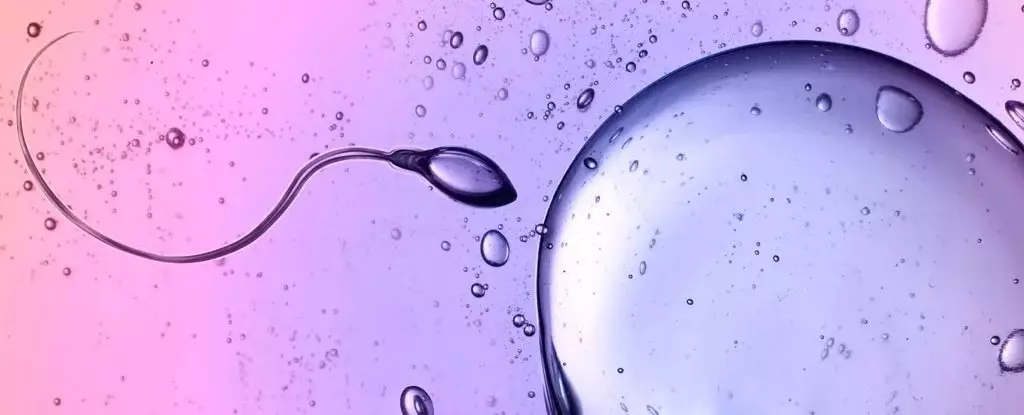Recent research has unveiled intriguing complexities in the motion of human sperm, challenging classical physics’ traditional principles. Newton’s third law, which posits that every action has an equal and opposite reaction, has long served as a foundational aspect of physical understanding. However, an innovative study led by Kenta Ishimoto at Kyoto University demonstrates that this law does not fully govern microscopic entities, particularly when they navigate through dense, viscous environments. This groundbreaking work highlights the nuanced dynamics of motile cells and offers important implications for our understanding of biological systems.
At first glance, the movement of sperm through fluid may appear straightforward. However, Ishimoto and his team unraveled the intricacies of how these gametes maneuver against the odds. Sperm and certain microorganisms, like the green alga Chlamydomonas, utilize flexible flagella that undulate in a way that seems almost counterintuitive. Typically, in a highly viscous medium, one would expect energy dissipation – that is, the fluid would absorb the energy exerted by the flagella, impeding movement. Surprisingly, these flagella manage to maintain a remarkable degree of propulsion despite this expected resistance.
This research indicates that both sperm and Chlamydomonas employ an astonishing property known as ‘odd elasticity’ in their flagella, allowing for energy conservation during their fluid interactions. The movements they exhibit are neither reciprocated nor mirrored, forming a unique mode of swimming that defies conventional expectations.
The concept of non-reciprocal interactions proves crucial for understanding the motions of these microscopic swimmers. In larger systems, such as colliding marbles, forces tend to balance each other out in a predictable manner. However, in the chaotic microscopic landscape, sperm and other biological microswimmers exert forces that do not conform to this symmetry. Instead, their motions create a scenario where they can propel themselves forward while simultaneously manipulating their surrounding fluid environment.
Ishimoto’s research indicates that the energy input from the motion of the flagella creates an unbalanced interaction with the surrounding fluids, allowing the sperm to thrive where traditional expectations would predict stasis. This phenomenon sheds light on the broader understanding of collective behavior in biological systems, revealing a world where standard physical laws bend under the influence of living organisms.
The researchers did not stop merely at identifying these interactions; they also developed a crucial new term, “odd elastic modulus,” meant to characterize the internal properties of flagella in biological entities. This advanced concept goes beyond traditional elastic modulus, accommodating the unique features of biological materials that comprise live cells. The discovery of odd modulus highlights how natural systems can be finely tuned and optimized for their specific functions, further enriching the discourse on bio-inspired robotics and material science.
Such insights not only pave the way for significant academic advancements but also hold practical implications. The principles derived from this research could inform the design of self-assembling, micro-robots that emulate the mechanics of biological entities, thus bridging the gap between biological function and artificial design.
The exploration of sperm movement opens a window into the complexities of physics at the microscopic level, initiating discussions about the limitations of classical physics when applied to biological phenomena. Through their innovative approach, Ishimoto and his team have drawn attention to the sophisticated mechanics that characterize sperm and its algal cousins.
Ultimately, the findings encourage further exploration into the intricacies of life at a microscopic scale. They propel new research directions that can reveal more about the principles governing collective behavior, energy efficiency, and the interplay of living organisms with their environment, especially in a world that often overlooks the diminutive yet powerful biology of microscopic life. This paradigm-shifting study not only contributes to the scientific community’s understanding but also hints at remarkable potential applications that stem from these remarkable biological systems.

